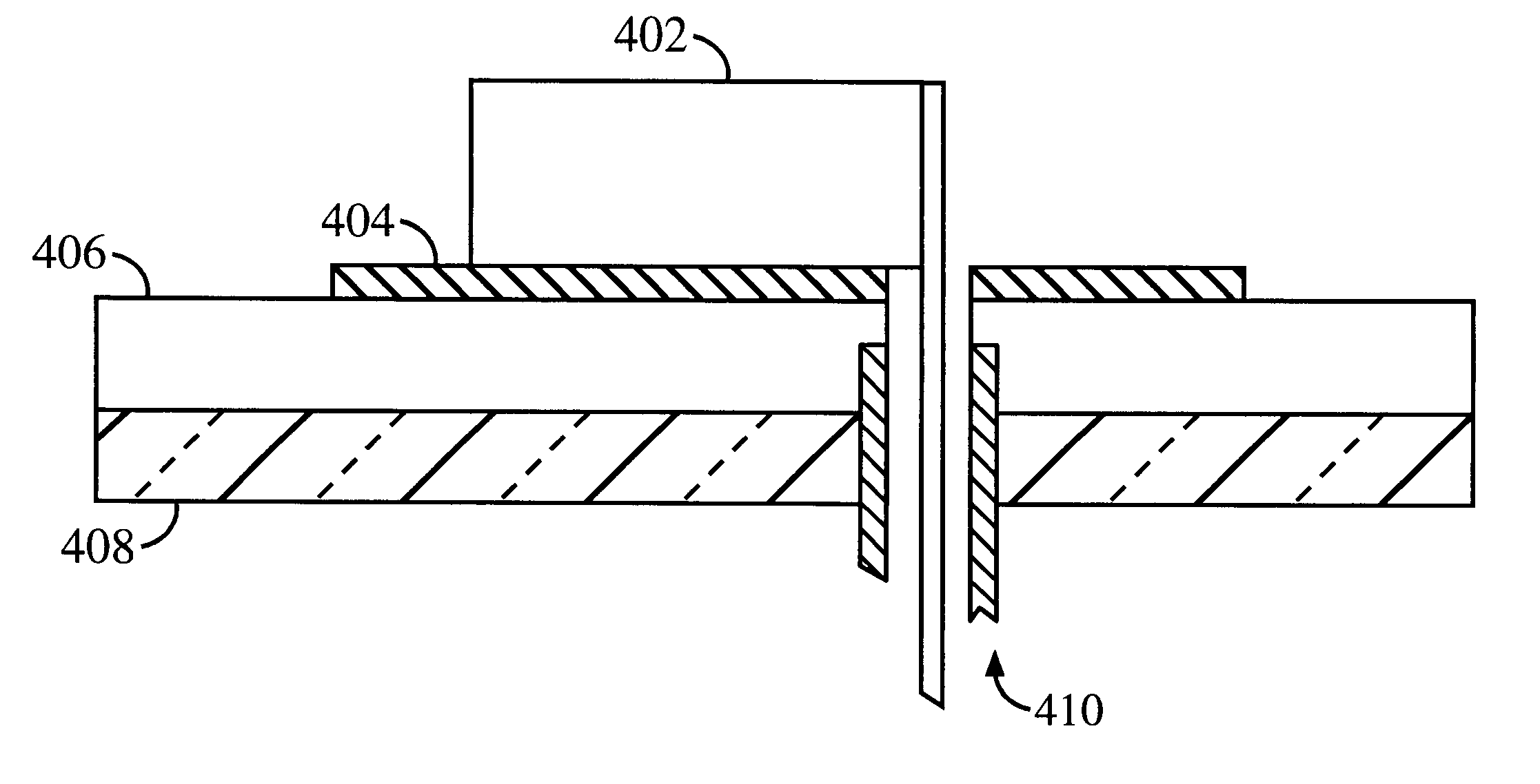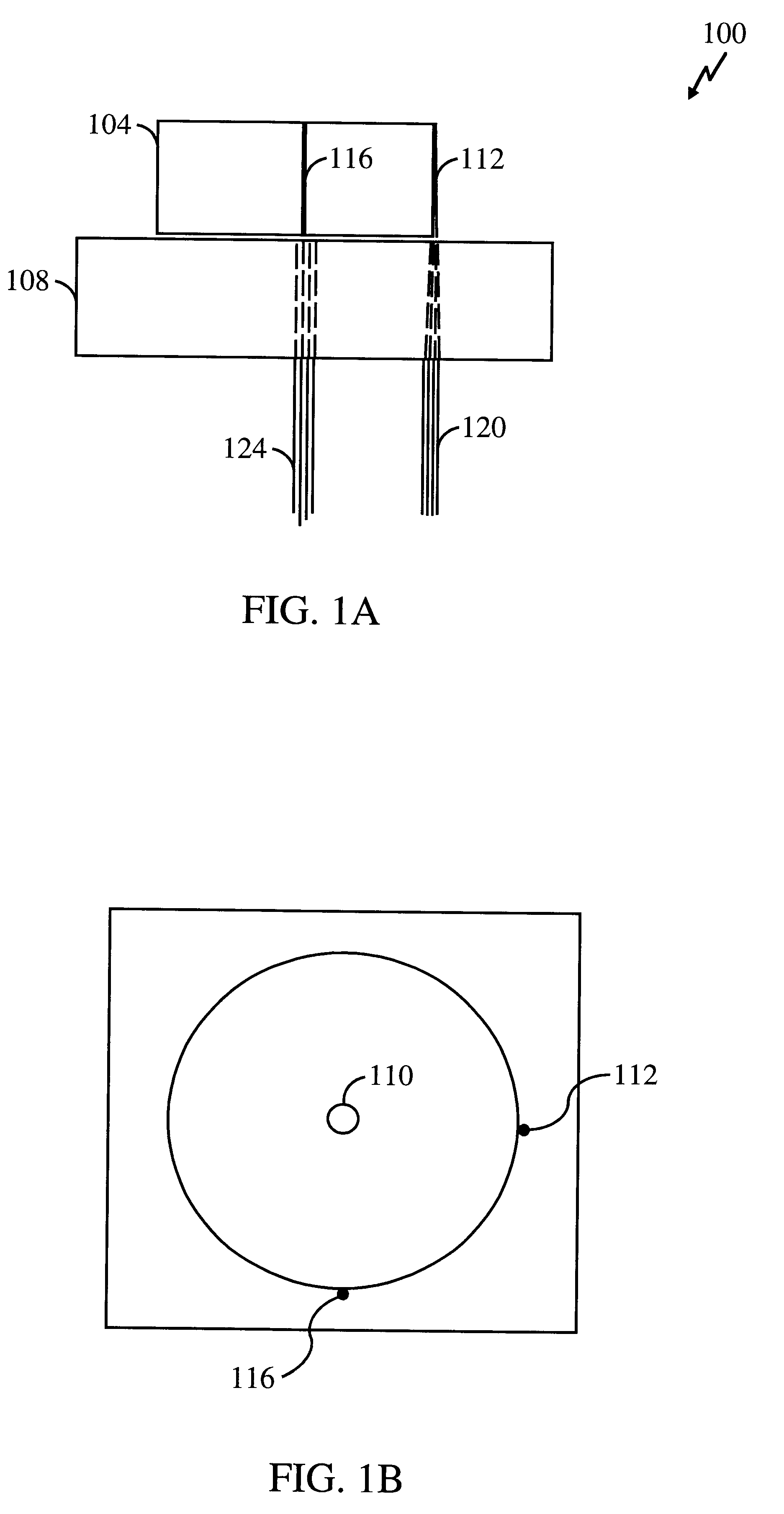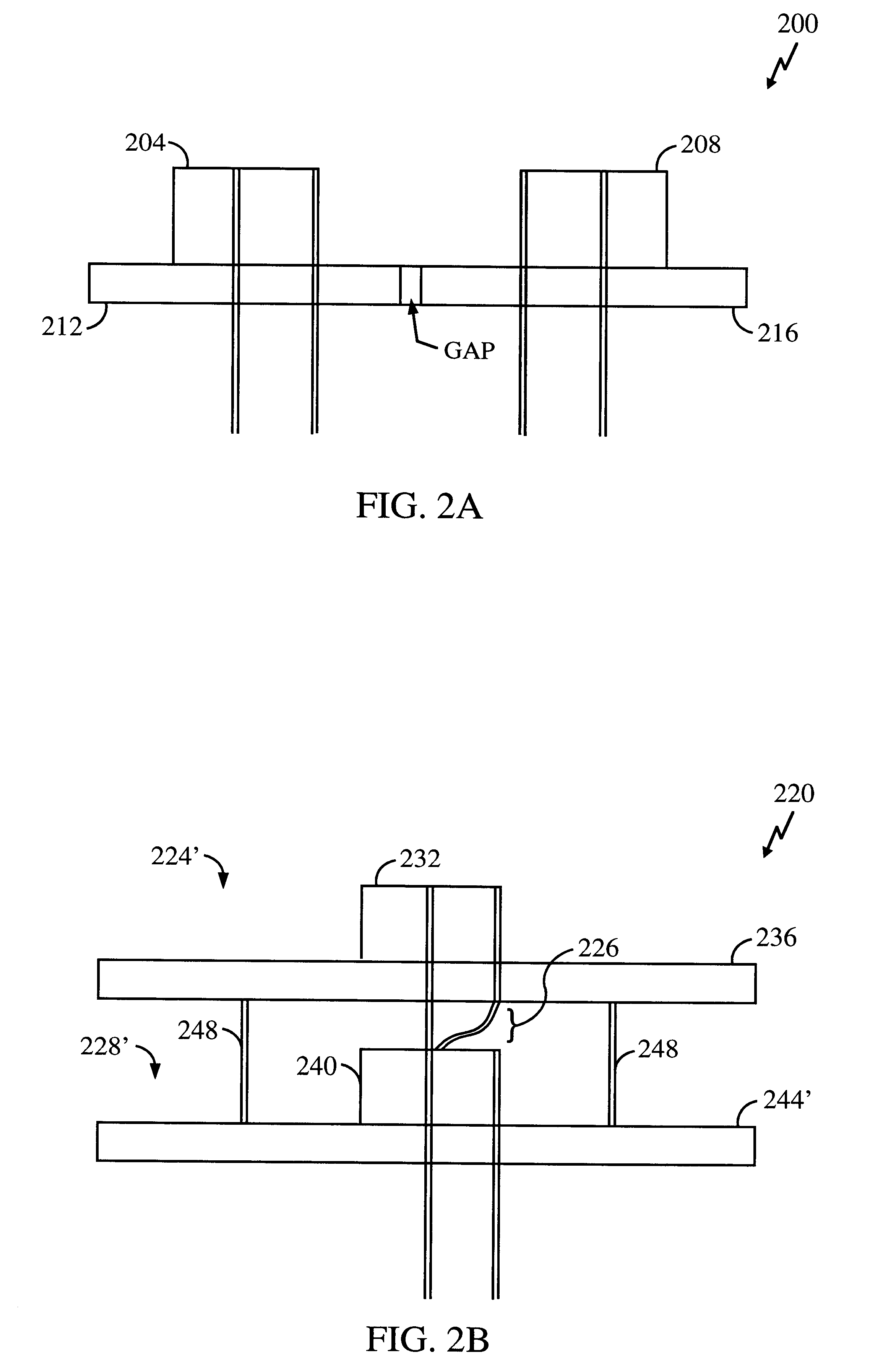Dielectric-patch resonator antenna
a technology of patch resonator and dielectric resonator, which is applied in the direction of resonant antenna, substantially flat resonant elements, and radiating elements of protection materials, etc., can solve the problems of large size, limited bandwidth and large size of antennas, and antennas that also exhibit significant reduction in gain
- Summary
- Abstract
- Description
- Claims
- Application Information
AI Technical Summary
Problems solved by technology
Method used
Image
Examples
Embodiment Construction
The dielectric resonator and stacked antenna designs discussed above are improvements over the art, providing: low profile, small-sized antennas for satellite communication applications, with simplified attachment to a PCB feed and for mounting elements such as power amplifiers and so forth. This arrangement allows for integration of other antenna types along the dielectric resonator antenna axis , thereby allowing for multifunction, multi-band performance in a single low profile assembly.
However, there also exist other antenna applications that do not rely on the more precise circularly polarized signal designs for assuring efficient or lower loss signal reception, but that can use a simple patch type antenna. One such application is the use of the Global Positioning System (GPS) to obtain accurate position location information for a wireless device user. There are many new proposed services being offered to prospective wireless device users , such as in the field of mobile telepho...
PUM
 Login to View More
Login to View More Abstract
Description
Claims
Application Information
 Login to View More
Login to View More - R&D
- Intellectual Property
- Life Sciences
- Materials
- Tech Scout
- Unparalleled Data Quality
- Higher Quality Content
- 60% Fewer Hallucinations
Browse by: Latest US Patents, China's latest patents, Technical Efficacy Thesaurus, Application Domain, Technology Topic, Popular Technical Reports.
© 2025 PatSnap. All rights reserved.Legal|Privacy policy|Modern Slavery Act Transparency Statement|Sitemap|About US| Contact US: help@patsnap.com



